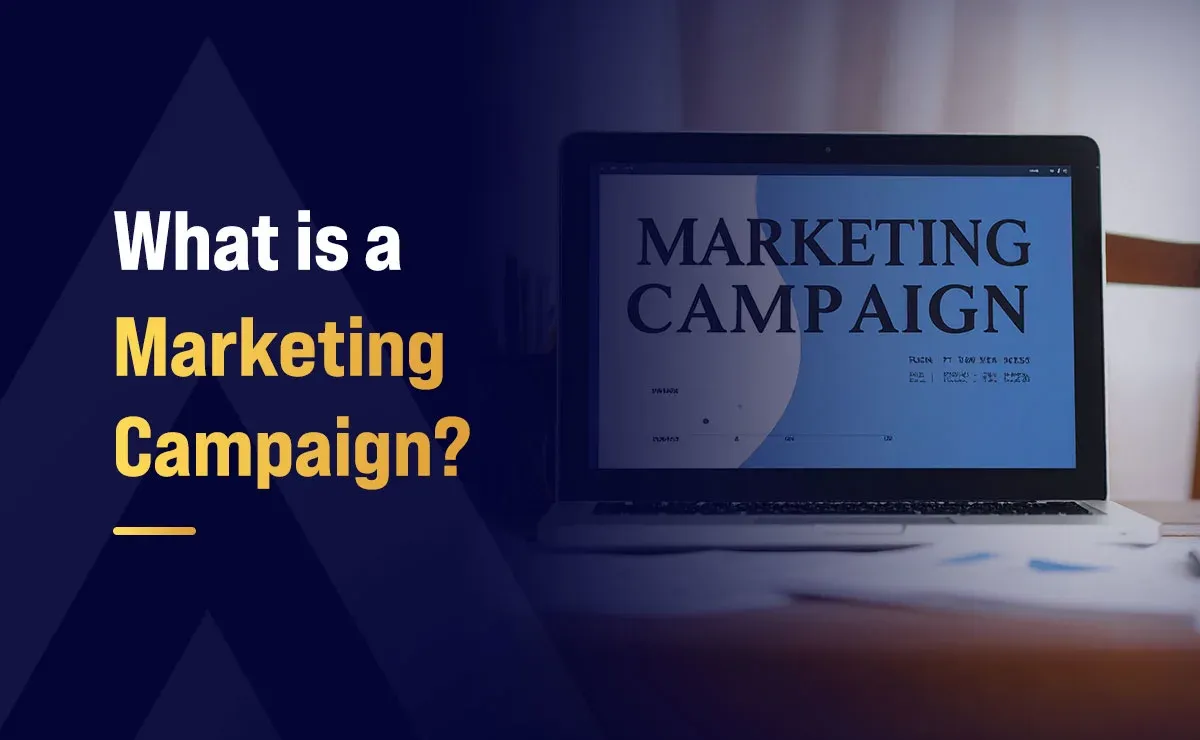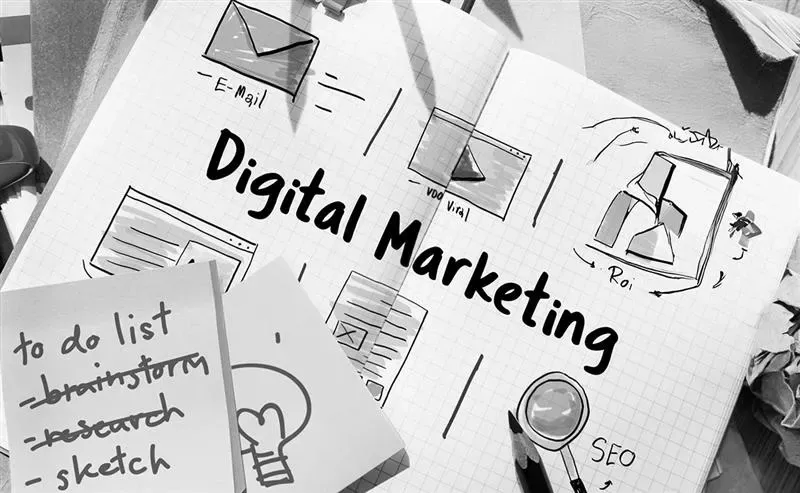What is a Marketing Campaign?

Marketing campaigns are coordinated efforts by businesses to achieve specific goals by leveraging multiple marketing channels. These goals can range from promoting a new product to building brand awareness to differentiating itself from competitors.
Every day, businesses strive to capture customer attention, breaking through the noise of digital and traditional media. Campaigns use multiple channels and tools to connect with the target audience, making them an essential aspect of any marketing strategy.
This article will explore what a campaign is in marketing, its various types, and the essential elements needed for success.
How to Set Up a Marketing Campaign?
Planning a marketing campaign involves setting clear objectives, identifying your target audience, and choosing effective channels and tactics. Understanding the essence of a marketing campaign is vital, as it serves as the cornerstone of your overall strategy. Here’s a detailed guide to crafting a successful marketing campaign.

Step 1: Understand the Scope of Your Plan
Your marketing plan is your campaign’s blueprint. It defines the purpose, activities, strategies, and KPIs for your campaign. Begin by clarifying the campaign’s purpose, whether to raise awareness, support a new product, increase revenue, or engage your audience. A clear focus allows for a more cohesive campaign that stays aligned with its original goals.
Step 2: Set Clear Objectives
Determine what you aim to achieve with specific, measurable, achievable, realistic, and time-sensitive (SMART) goals. Focus on concrete objectives like increasing brand awareness, generating leads, or driving revenue. Setting defined goals helps to guide decisions and track your progress, making it easier to measure your campaign’s effectiveness.
Step 3: Identify a Target Campaign Audience
Identifying your audience is essential for personalized messaging and efficient budget use. Look at demographics like age, gender, economic status, and location. Also consider behavioral data to target users based on interests and needs. A defined audience enables you to tailor your campaign content and choose the right platforms for maximum visibility and impact.
Step 4: Create a Message and Strategy
Your strategy and messaging should align with your brand’s goals. This includes crafting a unique, engaging message that speaks to your audience’s needs, presenting your product as a solution, and establishing trust with credibility elements. The messaging should highlight benefits, solutions, and emotional appeal to effectively resonate with the audience.
Step 5: Choose the Right Medium for Delivery
There are various channels available, both digital and traditional, that deliver your campaign. Therefore, select the channels that best align with your goals and match your target audience's behavior. Your options include owned media (like blogs), earned media (such as PR), paid media (advertising), and shared media (social channels).
Select channels wisely based on the type of content, your target audience's habits, and your budget to ensure each medium supports your message effectively.
Step 6: Set the Campaign Timeline
A clear timeline structures your campaign and holds your team accountable. Break down each task, from research to asset creation and distribution to ensure timely execution. Use a timeline tool like a Gantt chart to schedule activities and milestones, making it easier to stay on track and address any unexpected delays.
Step 7: Plan the Campaign Budget
A well-planned budget is crucial for a sustainable campaign. Examine the expenses associated with crucial campaign components, such as design fees, paid advertising, or influencer collaborations. Match these with your available budget and assess whether each cost incurred adds ROIs and value.
Being budget-conscious helps optimize spending and ensures resources are allocated where they’ll yield the best return.
Step 8: Establish Metrics of Success
Defining key performance indicators (KPIs) allows you to measure your campaign's impact. Metrics vary by objective but might include conversion rates, social engagement, or lead generation. Pick metrics that directly correlate with your main objective, whether it's brand awareness or driving revenue. Keeping an eye on these KPIs enables you to modify your strategies in real-time for optimal results.
Step 9: Continuous Improvement
Campaigns evolve, and reviewing performance data regularly can provide insights for refinement. Post-campaign analysis helps you identify successful elements and areas for improvement. These insights can guide mid-campaign adjustments or inform future campaigns, allowing your team to refine strategies and achieve even better results in the next effort.
What is a Digital Marketing Campaign?

A digital marketing campaign utilizes online platforms to engage target audiences. It works on objectives such as improving brand awareness, driving website traffic, or generating leads.
Digital campaigns offer flexibility, allowing adjustments to be made based on real-time analytics and performance feedback. They include content marketing, social media, email, SEO (search engine optimization), and paid online advertising as a part of their strategies.
Digital campaigns stand out for their ability to reach specific demographics, enabling marketers to personalize messages for different audience segments and track responses accurately.
Types of Marketing Campaigns?
Campaigns vary based on goals and audience needs. Here are five key types of advertising campaigns:
Campaigns to Build Awareness
Awareness-focused campaigns aim to introduce a brand, product, or service to a wider audience. These campaigns often utilize strategies like traditional media advertisements, social media promotions, or digital content creation to increase visibility and brand recall.
An example would be seasonal push campaigns that leverage key periods like holidays to attract attention. Effective campaigns often combine emotional storytelling with consistent messaging to leave a lasting impression.
Campaigns for Customer Acquisition
Acquisition campaigns are tailored to attract new customers by promoting products or services that meet their specific needs. These often include product launch campaigns, where a new offering is showcased through social media ads, email marketing, or influencer partnerships.
Additionally, contest marketing campaigns drive participation and engagement while subtly introducing the brand to potential buyers. Success in acquisition campaigns depends on understanding your target audience to create value-driven offerings and incentives like discounts or trials.
Campaigns to Spark Engagement
Campaigns that prioritize engagement are designed to create genuine and impactful interactions with your audience. For instance, blogs, interactive posts, and quizzes are used in content-driven brand awareness initiatives to encourage dialogue and connection.
Email marketing campaigns also play a role by delivering personalized content, such as updates, promotions, or tips, that keep customers engaged with the brand. Engagement campaigns thrive on creating value beyond transactions, fostering emotional connections through storytelling or user-centric activities.
Promoting Upsells and Cross-Sales
Upsell and cross-sell campaigns focus on increasing the lifetime value of existing customers. By identifying related products or premium versions of items that customers have purchased, these campaigns encourage additional spending.
For example, an email campaign promoting related accessories or a personalized upsell offer on checkout pages can boost sales without acquiring new customers. These campaigns rely on data-driven insights into purchasing behavior and effective targeting to succeed.
Campaigns to Build Loyalty and Advocacy
Loyalty-driven campaigns aim to nurture long-term customer relationships, turning satisfied buyers into repeat customers and brand advocates. Customer loyalty programs, which offer rewards like points or exclusive benefits, are commonly incorporated into these campaigns.
Similarly, referral-focused campaigns incentivize customers to bring in new prospects through discounts or gifts, leveraging word-of-mouth marketing. By showing appreciation and creating incentives, loyalty campaigns ensure customers stay engaged and invested in the brand's success.
Key Consideration for SEM Campaign Optimization
Effective search engine marketing (SEM) campaigns require a blend of strategic planning, budget management, and ongoing optimization. Below are key areas to focus on when optimizing SEM campaigns for maximum impact.
Keyword Intent
The foundation of SEM is understanding the purpose behind each search query. Are users seeking to buy, learn, or compare? Answering this question allows you to align your ads with the appropriate stage of the buyer's journey.
For instance, keywords with high intent to purchase may incur a higher cost-per-click (CPC), but they tend to deliver a higher return on investment. Tailoring keyword selection based on intent will help you avoid overspending on low-conversion terms and focus your budget on high-impact queries.
Structuring Campaigns and Ad Groups
Proper organization of your SEM campaigns and ad groups enhances both manageability and ad relevance. Create separate ad groups for distinct themes or product categories, each targeting a specific set of keywords.
This detailed structure enables more precise targeting and personalized messaging, leading to an improved quality score and reduced CPC. A well-structured SEM account also enables easier performance tracking and better-informed optimization decisions.
Budgeting and Bidding
Establishing an effective budget is essential for a successful campaign. Start by assessing the costs associated with your chosen keywords and determining your ideal CPC for each. For brands with smaller budgets, it’s often more cost-effective to target long-tail, less competitive keywords that still attract qualified leads.
Over time, analyze campaign performance and allocate more budget to keywords that consistently deliver conversions. This dynamic approach ensures that you’re investing in keywords that contribute directly to campaign success.
Landing Page Optimization
Getting users to click on an ad is only half the battle; the other half is ensuring they take desirable action on your landing page. For optimal conversion rates, ensure that landing pages load quickly, have a clean layout, and feature clear, value-focused calls to action.
Test various page elements, such as copy, visuals, and layout, to see what works best. Remember that both the ad and landing page should present a seamless experience that reinforces the same message.
Leveraging Analytics and Reporting
Constantly reviewing and interpreting performance data is key to SEM success. Monitor metrics such as cost-per-click, conversion rate, quality score, and ROI to identify what’s working and what needs adjustment.
Use tools like Google Analytics or SEM software to track user behavior and fine-tune your campaigns accordingly. By frequently analyzing performance data, you can make real-time adjustments that align with evolving trends and user behavior, ensuring your SEM campaigns continue to deliver value.
Types of Marketing Channels
In 2024, many businesses are adopting an omnichannel strategy for their marketing efforts. They create a balance between digital advancements and traditional methods. Here’s an overview of some of the most influential marketing channels.
Digital Advertising
Digital advertising utilizes online platforms to place ads in various formats, such as banners, video, and audio, on websites, social media, and email. Display ads appear as banners on various sites, often at a lower cost per click than search ads.
Unlike search ads targeting keywords, digital advertising places ads where target audiences are likely to see them based on content and relevance. E-retail platform advertising in India accounts for 22.49% of total digital media spends, according to the Dentsu Digital Advertising Report 2024.
Email Marketing
Email remains a powerful tool in the marketer's toolkit, favored for its familiarity, affordability, and measurable outcomes. Modern email marketing leverages automation and personalization to enhance engagement.
With more consumers reading emails on mobile devices, it’s critical to ensure emails are mobile-friendly and that landing pages load quickly and are responsive. Email marketing is a powerful tool that is expected to reach a global audience of 4.73 billion by 2026, according to Forbes Advisor.
Events
Event marketing connects brands with audiences face-to-face, differentiating them from purely digital interactions. Trade shows, product reveals, and conventions provide opportunities to engage clients personally and build brand loyalty.
While the nature of events varies, tailoring content to fit local cultures and specific audience interests ensures a memorable brand experience.
Influencer Marketing
Influencer marketing is a contemporary approach that taps into the power of social relationships, with influencers sharing their experiences with brands through blogs, videos, and social media posts. This industry is projected to reach Rs. 3,375 crores by 2026, growing at a rapid 18% CAGR, as reported by Ernst and Young (EY).
Influencer marketing is more relational than transactional, aiming to build credibility and awareness over immediate sales. Influencers provide brands with access to audiences who may avoid traditional ads, offering a valuable platform for brand promotion.
Traditional Marketing
Traditional channels, including television, radio, print, and outdoor advertising, still reach large audiences effectively. While often more expensive than digital alternatives, these methods are especially useful for broad reach.
A strategic balance of traditional and digital marketing helps ensure that a brand remains visible across multiple touchpoints, appealing to a diverse audience.
Word-of-Mouth Marketing
Word-of-mouth marketing depends on satisfied customers spreading the word about a brand. Positive experiences encourage people to recommend products or services to friends, creating an organic and trusted form of promotion.
As a cost-free strategy, word-of-mouth is often a byproduct of strong customer service and high-quality offerings, making it invaluable for long-term brand reputation.
Note that these are just a few examples of the most popular marketing channels used by businesses of all sizes. Utilizing an omnichannel strategy provides brands with a broad range of opportunities to connect with their audience.
Marketing Campaign Resources
Marketing campaign resources encompass the essential assets a marketing team uses to operate effectively, such as budgets, staff, materials, technology, and digital assets like brand guidelines and photos.
Proper management of these resources ensures smoother workflows, cost efficiency, and better ROI. Utilize appropriate Marketing Resource Management (MRM) software to enhance planning, collaboration, and brand compliance.
With centralized access to all resources, teams can streamline operations, cut extra costs, and optimize campaigns for improved performance and outcomes.
Marketing Campaign Goals
Here are a few marketing goals to consider when creating a successful marketing strategy:
- Boost Brand Awareness: Establish your brand identity and connect with your audience by telling compelling stories and engaging across platforms.
- Generate Quality Leads: Drive qualified prospects through strategies like lead magnets, retargeting, and content marketing.
- Enhance Customer Value: Foster loyalty with referral programs, exclusive perks, and personalized engagement to retain customers and boost sales.
- Strengthen Brand Engagement: Create a community by sharing meaningful content, hosting contests, and encouraging interaction.
- Drive Revenue Growth: Target customers throughout the funnel using tailored strategies like lead nurturing, demos, and loyalty programs.
- Acquire New Customers: Scale customer acquisition with sustainable tactics such as freemium models, SEO, or content marketing.
- Increase Website Traffic: Enhance digital presence with SEO, paid ads, and content that drives users to your site.
- Drive Revenue Growth: Target customers throughout the funnel using tailored strategies like lead nurturing, demos, and loyalty programs.
- Improve Internal Branding: Educate employees to align with your brand vision, enabling them to confidently advocate for your business.
- Measure Success: Use metrics like engagement, conversions, and customer satisfaction scores to assess campaign performance.
Clearly defined goals help with strategic execution and consistent measurement, which drive meaningful business impact.
Examples of Successful Marketing Campaigns
Below are examples of the 4 most popular and iconic marketing campaigns witnessed in the market.
1. Nike: "Just Do It"
Launched in 1988, this campaign highlighted real stories of athletes and individuals overcoming challenges, epitomized by an ad featuring an 80-year-old marathoner. It inspired countless people to share their personal "just do it" moments and became a defining brand tagline.
Key Takeaways:
- Align value propositions with emotional connections.
- Inspire audiences through relatable, meaningful storytelling.
2. Pepsi: "Is Pepsi OK?"
Premiering during Super Bowl LIII, Pepsi's humorous ad addressed the common restaurant scenario of Pepsi being the alternative to Coke. With celebrity appearances and a playful tone, the campaign reframed Pepsi as “More Than OK.”
Key Takeaways:
- Leverage self-awareness in marketing.
- Tap into relatable customer experiences for resonance.
3. Old Spice: "The Man Your Man Could Smell Like"
Old Spice rebranded male grooming with a humorous ad featuring Isaiah Mustafa. His witty monologue targeted women while presenting Old Spice as the ideal choice for men wanting to exude confidence and sophistication.
Key Takeaways:
- Use humor to enhance recall and engagement.
- Create a brand persona aligned with consumer aspirations.
4. Coca-Cola: "Share a Coke"
Coca-Cola customized its product by printing names on bottles, encouraging people to "Share a Coke" and post their photos on social media. This campaign fostered connection and made the brand part of personal moments.
Key Takeaways:
- Understand target audience behavior and preferences.
- Embrace personalization and social sharing for engagement.
What Types of Media Are Used for Marketing Campaigns?
Marketing campaigns employ various media formats to engage audiences and accomplish their goals. Here are the most popular types:
Traditional Media:
- Print Media: Includes newspapers and magazines, offering affordable advertising options with periodic content to target specific demographics. Magazines allow marketers to focus on niche audiences based on themes or topics.
- Radio Advertising: Uses broadcast platforms to deliver ads across different genres and locations, providing cost-effective access to diverse listener demographics.
- Television Advertising: Features product promotions through commercials, product placements, or news segments, leveraging TV’s vast reach and the power of visual storytelling.
Digital Media:
- Social Media Marketing: Employs platforms like Facebook, Instagram, and TikTok to interact with consumers through comments, shares, and direct engagement, extending reach across various audiences.
- Search Engine Marketing (SEM): Focuses on increasing website traffic through paid ads or pay-per-click strategies, often placing company pages at the top of search results.
- Content Marketing: Creates engaging online materials, such as blogs, videos, and interactive tools, to attract and retain customers by offering valuable and entertaining content.
- Mobile Marketing: Targets mobile device users through optimized ads on social media, search engines, or streaming platforms, ensuring easy access for audiences on the go.
By integrating different media formats, companies can create customized campaigns that resonate more strongly with their target market.
What Is the Goal of a Marketing Campaign?
The goal of a marketing campaign is to achieve specific business objectives by promoting a product, service, or brand to a targeted audience. These objectives can include increasing brand recognition, driving sales, generating leads, enhancing customer interactions, or fostering brand loyalty.
A successful campaign aligns with a company's overall marketing strategy and resonates with its audience by delivering a clear, compelling message through the most effective channels. Ultimately, the goal is to influence consumer behavior and achieve measurable outcomes that contribute to the business's growth and success.
FAQs
Q1: What is the Most Effective Email Marketing Campaign Strategy?
Ans: The most successful email marketing tactics center around personalized content, audience segmentation, and offering real value. This includes tailoring content to specific audience segments, crafting engaging subject lines, and offering useful information or exclusive deals.
Automating email workflows and continually monitoring metrics like open rates, click-through rates, and conversions are key to ongoing optimization.
Q2: What is campaign management in digital marketing?
Ans: Campaign management in digital marketing involves planning, executing, tracking, and optimizing marketing initiatives across digital channels to achieve specific objectives. It includes setting clear goals, selecting target audiences, creating content, allocating budgets, and monitoring performance metrics such as impressions, clicks, and conversions.
Q3: What is an integrated marketing campaign?
Ans: An integrated marketing campaign involves coordinating multiple marketing tactics and channels to communicate a consistent message. This approach ensures consistency across platforms such as social media, email, print, TV, and digital ads, reinforcing the brand message and creating a seamless experience for the audience.
Q4: What is an inbound marketing campaign?
Ans: An inbound marketing strategy focuses on drawing in, engaging, and delighting prospective customers by providing helpful content that addresses their concerns or fulfills their needs.
Unlike traditional outbound methods, inbound campaigns use tactics like blogging, SEO, social media, and email to draw prospects to your brand organically.
Summing Up
A successful marketing campaign is essential for achieving business goals such as brand awareness, lead generation, and customer loyalty. By understanding your audience, setting clear objectives, and choosing the right channels, you can create impactful campaigns that deliver measurable results.
Understanding these requirements helps businesses stay competitive and engage their audiences effectively. Hence, businesses must also consider employing people with a relevant education in marketing, like a modern-day PGP course that aligns with the changing trends of a successful marketing campaign.
Continuous optimization based on performance data ensures your campaigns stay effective and aligned with market trends. Ultimately, well-executed campaigns drive growth, strengthen customer relationships, and support long-term success.





